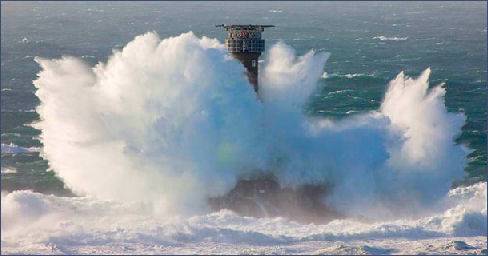Longships Lighthouse
OS grid ref:- SW 319525
 Longships Lighthouse stands on Carn Bras (Cornish: Karn Bras, meaning big rock-pile), the highest of the Longships islets.
Longships Lighthouse stands on Carn Bras (Cornish: Karn Bras, meaning big rock-pile), the highest of the Longships islets.
The islets are situated about 1.25 miles (2.01 km) off the storm battered cliffs of Cornwall's most westerly point, Land's End. The lighthouse has been unmanned since 1988.
The waters surrounding Lands End have always been renowned for their treacherous nature and in stormy weather, the view from shore is one of a furious sea pounding against granite. The artist Mallord William Turner captured this tumult in his watercolour 'Longships Lighthouse, Land's End'.
The original lighthouse tower was designed by by Lieutenant Henry Smith in 1795 under licence from Trinity House and constructed in 1795. The lantern rose to 79 feet (24 m) but very high seas obscured its light.
In 1869 Trinity House began the construction of a replacement. The present building is a granite tower, designed by engineer Sir James Douglas, it was first lit in December 1873 . Even after these improvements, the S.S. Bluejacket was wrecked on rocks near the lighthouse on a clear night in 1898, nearly demolishing the lighthouse in the process.
The light has a range of 19 miles, and there is a fog signal that blasts every 10 seconds. In the 1980's a helipad was added to the top of the tower to make maintaining the light an easier task.